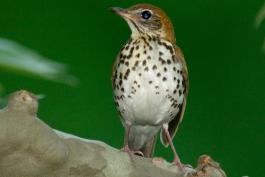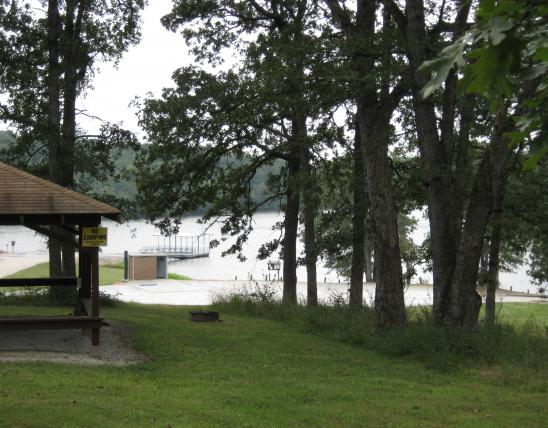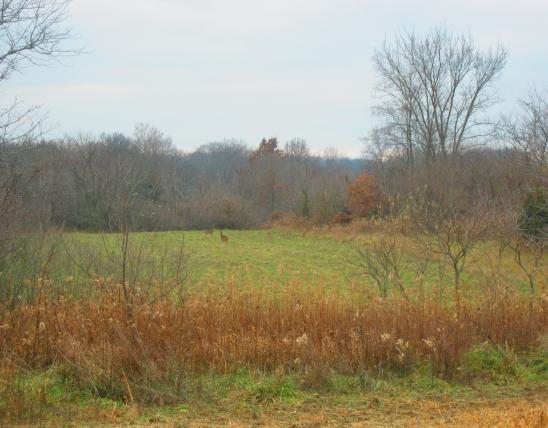
Adult wood thrush upperparts are grayish brown on tail and rump, grading into bright rufous red on head, nape and shoulders. A white eye ring is prominent on the black- and white-streaked cheek. Underparts are white, with large dark spots from the throat to the upper belly and along the sides and flanks. The melodious song often begins with several lower notes followed by a ringing “ee-o-lay,” with the second note lower than the others. This is often followed by a complex of “tings” and warbles. The call is “pit-pit-pit,” often repeated many times, or a variety of guttural notes.
Length: 7¾ inches (tip of bill to tip of tail).

Statewide.
Habitat and Conservation
Moist, shady forests, parks, woodlands and swamps, especially in larger acreage forests. Because wood thrushes prefer larger acreages, habitat fragmentation is an increasing problem, including higher exposure to predators and nest-parasitizing brown-headed cowbirds. Habitat loss is occurring not only in the United States, but also in Central America, where wood thrushes overwinter. Biologists use this species to indicate how the populations of many other woodland birds are faring.
Food
Forages on the ground and in trees for insects, spiders and fruit.
Status
Common summer resident.
Life Cycle
Wood thrushes nest in Missouri soon after their arrival in mid- to late April, and there is often a second brood. They build a bulky cup nest of weeds, grass, leaves and mud, lined with rootlets, in trees, and usually lay 3–4 eggs. These incubate 13–14 days, and the young fledge in 12 days. Wood thrushes overwinter in Mexico and Central America and migrate at night, orienting themselves with the stars and with the planet’s magnetic field.
Human Connections
In 1852, Thoreau described what the wood thrush’s song means to humans: “Whenever a man hears it, he is young, and Nature is in her spring . . . it is a new world and a free country, and the gates of heaven are not shut against him. . . . He sings to make men take higher and truer views of things.”
Ecosystem Connections
These omnivores help to control populations of many invertebrates, while also serving as food for predators such as hawks and owls. The eggs and young are especially vulnerable to predation to many species of birds, snakes and mammals.




Where to See Species
About 350 species of birds are likely to be seen in Missouri, though nearly 400 have been recorded within our borders. Most people know a bird when they see one — it has feathers, wings, and a bill. Birds are warm-blooded, and most species can fly. Many migrate hundreds or thousands of miles. Birds lay hard-shelled eggs (often in a nest), and the parents care for the young. Many communicate with songs and calls.


























